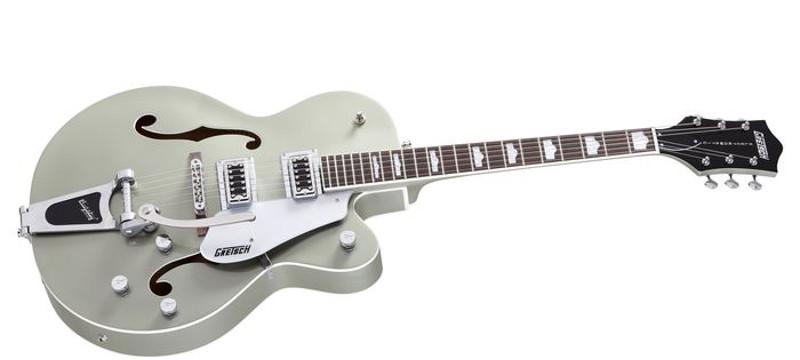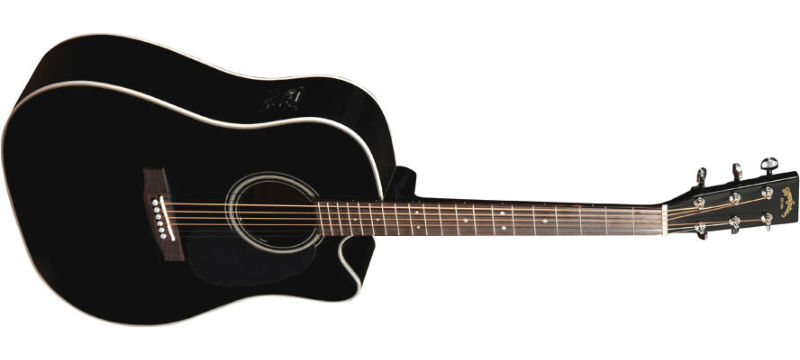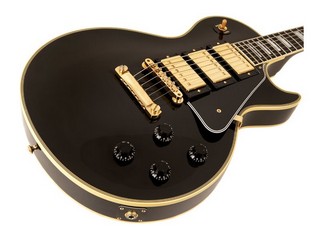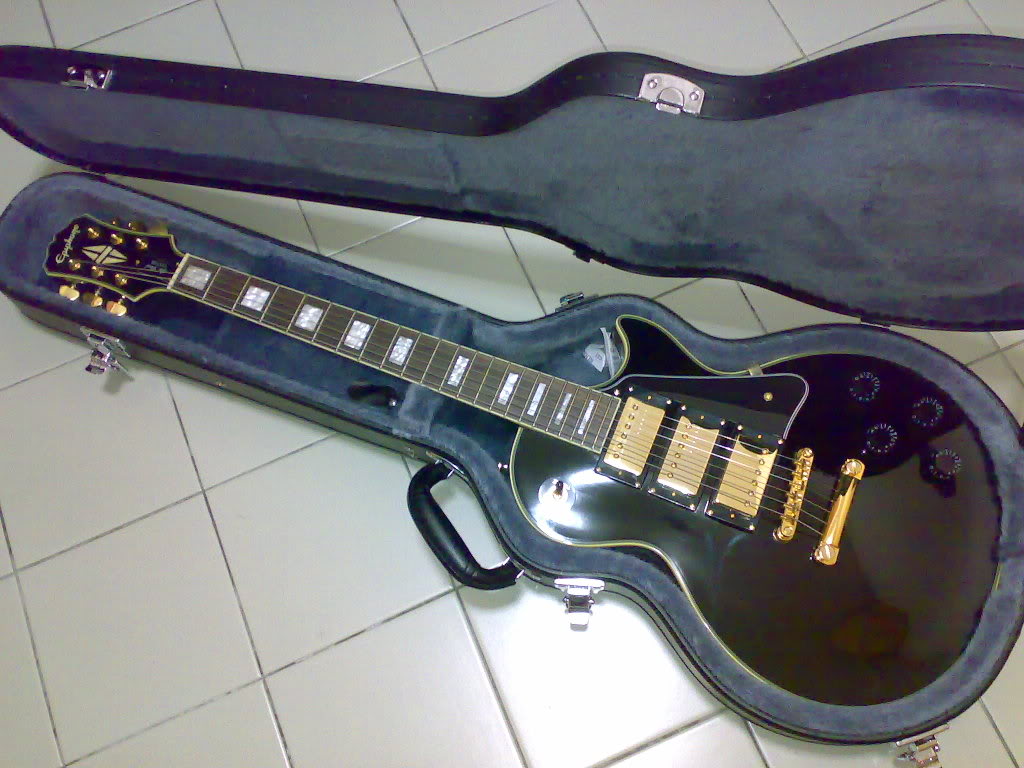
Although I tried learning in my younger years, I never really got too far. This was in the 1970s before YouTube and the Internet. Today there is so much content and there are so many people and approaches available, I find that I am bound to find someone explainng it that seems to make so much sense to me. I now have a few guitars. No, more guitars does not equate to more skill. I mean electric or acoustic, plugged or unplugged.
Acoustic

Starting off with acoustic, the immediate advantage is that you just need the guitar itself to start playing. There are plenty of accessories – capos, picks, slides etc – that can be used with an acoustic, but you can also play music and perform without any of them. The same can’t be said of an electric guitar where – unless you intend to play very quietly – you’ll at least need some sort of amp, power source for the amp, and a cable. In practical terms this means you can just reach for an acoustic and play it wherever you are, whereas an electric guitar will require a dedicated space, as well as the additional steps required to get it ready to play.
Acoustic guitars are also generally considered more ‘bedroom friendly’, meaning you can play them without quite so much fear of annoying your neighbours. That being said, I have one student who has to play her electric at home using headphones because the acoustic is still too loud for her thin walls, so this point is debateable and largely dependent on your own personal practice space.
When it comes to cost, in my experience a good starter acoustic guitar is slightly cheaper than an equivalent electric one. You can get great full-size acoustics from the likes of Yamaha and Fender for under £200, whereas you’ll be spending a bit more than that for a decent electric, and that’s before you even get to all the extra equipment. For both acoustic and electric guitars you can buy cheap starter packs which contain all the additional items you might need, such as small amps for electrics. But these will generally be at the lowest end of the spectrum in terms of quality.
There are a couple of cons though if acoustic is your first choice of guitar. Firstly, and probably the most important one, is that you’ll be limited to some extent in what you can play in a way that you won’t be with an electric guitar. Pretty much anything you can play on an acoustic can also be played on an electric, whereas the reverse isn’t always true. There’s nothing stopping you using an electric guitar to just strum open chords or fingerpick your favourite folk tune. Whereas on an acoustic, due to the accessibility of the neck and the action of the strings, learning how to shred your favourite Slash solo will be considerably harder and virtually impossible for anything past the 12th fret. Slash may be able to play the intro to Sweet Child of Mine acoustically but I wouldn’t recommend it until you’ve learnt on an electric first.
The other big problem is that the first few weeks and months of playing guitar can be tough on the fretting hand. The ends of your fingers will hurt, and the dexterity needed to contort your fingers to hold various chord shapes doesn’t happen overnight. The feeling of ‘I’ll never be able to get my fingers to make that shape’ is a major reason for many an aspiring guitarist to give up before they’ve really begun, and these issues are definitely more prevalent with an acoustic guitar than an electric. And that’s before we even consider holding down a bar chord!
Electric

As mentioned above one of the big plusses with an electric guitar is that, in terms of different types of guitar playing and techniques, an electric is more versatile then an acoustic. Most genres can be played, or certainly learnt, on both. But if you know your ultimate goal is playing solos in a genre that uses electric guitars, an acoustic might not be for you. It’ll mean waiting for your second guitar before you can start doing what excites and inspires you, which could lead to you giving up on the instrument before you’ve had a chance to plug in to an amp and crank the volume.
The cons of cost, extra equipment – and mobility issues – and noise have also been touched upon. But something else to consider is the vast array of sounds you can get from an electric guitar. On the surface this may seem like a positive, and it certainly will be at some point down the line, but as a beginner it can bring on a real case of indecision paralysis! There are so many different factors contributing to the sound of an electric guitar, such as the guitar itself, the amp, pedals, cables, and more. As a beginner you’re unlikely to know what sound you want straight away, and even if you do it’s likely to be a) expensive to achieve and b) a distraction from the focus on just learning the basics. An acoustic is simple in its nature and a lot more brain space is reserved for just learning how to play the instrument.
Lastly, to revisit the noise factor, it’s worth noting again that most modern digital amps now give you the ability to create nice sounds at low volume levels, unlike their more professional counterparts the valve/tube amp, which really do need a not-safe-for-home level to sound good. And most digital practice amps have a headphone jack if all else fails. Meaning volume shouldn’t really be too much of a consideration in making your decision.
Conclusion
Ultimately, if you just want to become a well-rounded guitarist capable of playing multiple styles, songs and genres then you’ll inevitably end up with both an electric and an acoustic guitar (probably many of both). So the question then becomes what is the best order to learn them in. Especially if money is tight and your first guitar is likely to be your only guitar for the foreseeable future.
The first thing to say is you can’t really go wrong with either as both are essentially the same instrument. They both use the same standard tuning of EADGBe, meaning chord fingerings, scales and intervals shapes are the same on both. So anything you learn on one will be transferable to the other. You won’t be wasting precious hours on one and then finding you need to start over if you change your mind. You can take comfort in knowing that all roads will still be available to you whatever you chose. Very few guitarists define themselves as either an electric or acoustic player.
All that being said, I do personally prefer my students to start with an acoustic. The reason for this is because of its stripped back nature compared to an electric. Any guitarist needs to learn the fundamentals and an acoustic dictates that you do this early on in the learning process, whereas an electric, with its many distractions, can lead to the temptation to run before you can strum. I also think the ease of access and mobility are very important in the early stages of learning. Every minute of practice gets you that bit further and losing valuable time messing round with an amp is going to slow down progress. You’ll also find, certainly in my experience, that you’re more likely to encounter an acoustic guitar outside of your home, such as round someone’s house or at a party. If your fingers are only used to the relative ease of playing an electric then you’re not going to impress your family/friends playing their acoustic guitar with its 10 year old strings. However, if you’ve toughened them up on your own guitar then all of those showpiece tunes you’ve learnt will still be available to you.
Acoustics are tougher in terms of physicality; your fretting hand fingertips will certainly be a little sorer than with an electric. But these are obstacles we all have to overcome and aren’t entirely avoided with an electric guitar. Plus, if your aim is to ultimately play both, starting with an acoustic will make playing an electric a breeze when it comes to it.
But this is just my personal preference. There’s absolutely nothing wrong with learning on an electric at all. In fact, my first guitar was a Hank Marvin Red Squier Signature and I’m still playing! Ultimately you have to have fun learning or you won’t want to play. So buy the one that excites you the most and enjoy!

